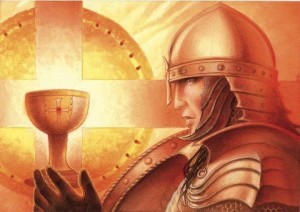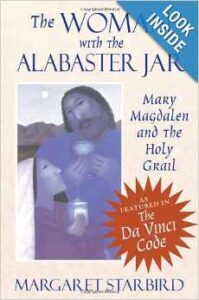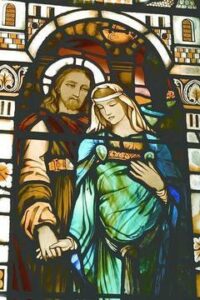 I’ve told you before, Margaret Starbird has been one of my most powerful influences, and I consider her one of my spiritual teachers ever since I met her in 1999. That was the same  time our Mystery School with its Order of Mary Magdala was going online. I had read her seminal work, The Woman With the Alabaster Jar: Mary Magdalen & the Holy Grail in 1993 when it was first published, so in a way she became my spiritual teacher even before I started following her around the country attending workshops.
I’ve told you before, Margaret Starbird has been one of my most powerful influences, and I consider her one of my spiritual teachers ever since I met her in 1999. That was the same  time our Mystery School with its Order of Mary Magdala was going online. I had read her seminal work, The Woman With the Alabaster Jar: Mary Magdalen & the Holy Grail in 1993 when it was first published, so in a way she became my spiritual teacher even before I started following her around the country attending workshops.
Our Esoteric Mystery School study programs use her inspiring books about “the Goddess” hidden in the New Testament, aka Mary Magdalene.
Margaret posted the following yesterday to our GoddessChristians forum. Margaret responds to this short quote about the Holy Grail never existing:
Speaking of the Holy Grail –“its religious significance didn’t arise until medieval legends entwined ancient Celtic myths with the Christian tradition of the Holy Chalice used by Jesus at the Last Supper.
“The Grail legend is a literary invention of the 12th century with no historical basis,” Carlos de Ayala, a medieval historian at a Madrid university, told the AFP news agency. “You cannot search for something that does not exist.”
***************************
Margaret Starbird writes: As some of you already know, I don’t believe that the “Holy Grail”– “sangraal” in Old French — was “the Holy Chalice used by Jesus at the Last Supper.” Describe it another way as “the vessel that once contained the blood of Christ.” Now, rather than a cup of gold or silver, you have the hint of an “earthen vessel” — in fact, a woman, bearing a child of whom Christ is the father. If you divide “sangraal” before the “g”– you have
“San graal” — encountered in the “Grail” stories about a “cup” or “chalice.” But if the same word is divided after the “g” — “sang raal,” it means “Blood royal” in Old French. You don’t carry the “blood royal” in a jar with a lid!
In medieval legend, Joseph of Arimathea is almost always the “custodian of the Grail” — sometimes shown in medieval paintings holding a chalice under the wound in Christ’s side as he hung on the cross. But there are also medieval paintings that show Mary Magdalene holding the chalice to catch blood dripping from the wounds of Christ, so both Mary Magdalene and Joseph of Arimathea are associated with the “Grail” myth. My own pet theory is found in the 20-page fictional Prologue of my Woman with the Alabaster Jar, called “Miriam in the Garden” (published in 1993 — the book that launched Dan Brown’s research for The DaVinci Code).
Realizing that Mary Magdalene is nowhere to be found in the Book of Acts, despite her prominence at the cross and tomb in all four Gospels, I asked myself, “Why did she disappear so completely?” The only logical answer I could imagine was that she was perceived to be in danger and taken to a place of safety when rumors of the Risen Christ began to circulate in Jerusalem. This scenario would have been extremely likely if she had children or was pregnant….making her “the vessel that once contained the blood of Christ.” You don’t carry the royal blood around in a jar with a lid…
Please check out these articles posted on my website about the “Grail” in Leonardo’s “Last Supper” —  and the webpages about my books Alabaster Jar and Bride in Exile if you haven’t already!
http://www.margaretstarbird.net/last_supper.html
http://www.margaretstarbird.net/the_woman_with_the_alabaste.html
http://www.margaretstarbird.net/mary_magdalene_bride_in_exi.html
In memory of Her,
Margaret





 Everyone is talking about — and my friend Joan Norton, author of
Everyone is talking about — and my friend Joan Norton, author of  The blogs and forums are all discussing the topic and it’s good to have dialog about our favorite Christian “theory”, that Magdalene and Yeshua were married and the Sacred Union is at the heart of Christianity.I say theory because as Margaret Starbird often quips, “we don’t have a marriage certificate!” Having both a Christian Goddess and God is a spiritual “doctrine” that brings Christianity into balance, no longer a lop-sided dysfunctional religion, but one with heart AND soul. I believe
The blogs and forums are all discussing the topic and it’s good to have dialog about our favorite Christian “theory”, that Magdalene and Yeshua were married and the Sacred Union is at the heart of Christianity.I say theory because as Margaret Starbird often quips, “we don’t have a marriage certificate!” Having both a Christian Goddess and God is a spiritual “doctrine” that brings Christianity into balance, no longer a lop-sided dysfunctional religion, but one with heart AND soul. I believe